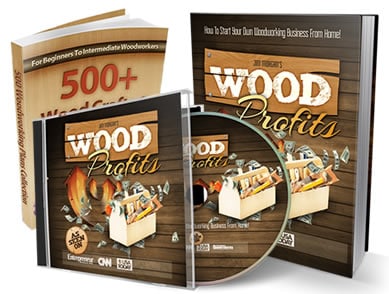Subscribe to The Honest Carpenter on YouTube
The five-in-one tool, also known as a painter’s tool, is a versatile and indispensable tool that has an endless number of uses. Whether you are a tradesperson, a DIY enthusiast, or a homeowner, this tool can be a valuable addition to your toolkit. It may not look like much, but it has given more value to its users than any other three tools combined.
In this article, we will explore the top 10 most important uses for the five-in-one tool. From painting functions such as roller cleaning and opening paint cans, to carpentry uses like nail prying and light chiseling, this tool is truly a jack-of-all-trades. The final and most important use of the tool, according to the author who is a professional carpenter, is prying apart materials during controlled demolition. Keep reading to discover the many ways in which this simple tool can make your work easier and more efficient.
Key Takeaways
- The five-in-one tool, also known as a painter’s tool, is a versatile and indispensable tool with an endless number of uses.
- The top 10 most important uses of the tool include roller cleaning, opening paint cans, hammer striking, paint scraping, corner gouging, spreading putty, nail prying, surface protection, light chiseling, and prying apart materials during controlled demolition.
The Five-In-One Tool
The Five-In-One Tool, also known as a painter’s tool, is a versatile tool that has an endless number of uses. It is a must-have tool for tradespeople, DIYers, and homeowners. In this section, we will discuss the top 10 most important uses for this tool.
Painting Functions
The Five-In-One Tool is great for painting tasks. Here are some of the painting functions it can perform:
- Roller Cleaning: The tool can be used to squeeze out excess paint from rollers, prolonging their lifespan. It works for both full-sized rollers and mini rollers.
- Opening Paint Cans: The little flat head on the back of the tool makes a great lift for prying up paint lids. It is also helpful for closing paint cans.
- Hammer Striking: The tool’s metal butt can be used for driving paint can lids back into place or giving something a hard knock to dislodge it.
- Paint Scraping: The tool’s thin body and wide beveled surface make it the ultimate paint scraping tool. It can also be used for scraping caulk off the edge of trim pieces.
- Corner Gouging: The tool’s blunt dagger point is perfect for raking out corners where two surfaces meet. It can also be used to pick up material for scraping it out later.
- Spreading Putty: The beveled face is excellent for use as a putty knife, creating a lot of surface area and a fine, sturdy point of control.
Other Uses
The Five-In-One Tool is not just for painting tasks. Here are some other uses for this versatile tool:
- Nail Prying: Some models come with a little teardrop shape near the bevel for prying small nails.
- Surface Protection: The tool can be used to protect vulnerable surfaces like trim or drywall when prying out nails or other fasteners.
- Light Chiseling: The tool can be used for light chiseling work, such as splitting wood or breaking apart other materials.
- Prying Apart Materials: The tool’s thin and stiff design makes it the most delicate demolition tool ever invented. It can be wedged or tapped into the tiniest crevices without causing damage to the surface material on either side, making it perfect for controlled demolition.
In conclusion, the Five-In-One Tool is an indispensable tool that can perform a wide range of tasks. Whether you’re a tradesperson, DIYer, or homeowner, this tool is a must-have in your toolbox.
Want To Improve Your Woodworking?
Discover 1,000 Hours Of Step-By-Step Woodworking Videos

It’s called Woodwork101. A database of detailed videos and blueprints in crystal clear, mouth-watering HD that will take you by the hand and show you that DIY home projects done the right way are easy, fun, and always of top quality… turning dream into reality in a heart-beat. Getting you that perfect build each and every time.
Painting Functions
Roller Cleaning
The five-in-one or painter’s tool can be used to squeeze out excess paint from paint rollers. By spinning the roller and working all surfaces, the tool forces the paint out in a smooth raising motion. After rinsing the roller, the tool can also be used to squeeze out the excess water. This works for both full-sized rollers and mini rollers, making it a great way to prolong the lifespan of painting tools.
Opening Paint Cans
The little flat head on the back of the tool makes a great lift for prying up paint lids. It’s extremely easy to slot it in and give the handle a little pry to pop the lid out. Alternatively, the tool can be worked around the rim like a can opener, and the lid will lift off with ease. This way, one can avoid bending the lid with force. The tool is also very helpful for closing paint cans, especially ones that are really junked up with paint.
Hammer Striking
Most five-in-one painters’ tools now come with a little metal butt down on the end of the handle. This is primarily for driving paint can lids back down into place. Just a few quick taps around the perimeter will give a flush seal. However, it is not recommended to use it for any other types of hammering, certainly not driving nails, as it doesn’t have the force or accuracy for that. But if one needs to give something a hard knock to dislodge it, the tool can be used for that.
Paint Scraping
The body of the tool is very thin, just over a sixteenth of an inch, and the top has a wide beveled surface. These features combined make this the ultimate paint scraping tool. By placing the bevel face down and driving the tool forward at a very low angle, one can scrape even the most stubborn paint chips. The back of the bevel can also be used at a steeper angle in a raking motion, plowing up loose paint surfaces and knocking chips away. It’s also great for scraping caulk off the edge of trim pieces, but one should be sure not to dig too deeply and begin prying up wood.
Corner Gouging
The tool head also has a blunt dagger point on the other end, which is perfect for raking out corners where two surfaces meet. One can just draw the tool down with a lot of pressure, and it’ll slash and force material out of that gap. The little point can also be used as a pick for wrangling material up so that it can be scraped out later. This doesn’t have to be just for paint removal; it can be used to carve out dirt, grime, or nearly anything else lodged in a corner.
Spreading Putty
The beveled face is also excellent for use as a putty knife. One can use it to trowel spackle, wood filler, or even bondo. The wide blade creates a lot of surface area, and the sharp edge gives a fine, sturdy point of control. However, one should remember to clean the tool off before going on to use it for other things. Some harder wood fillers like bondo can really gunk it up.
Overall, the five-in-one or painter’s tool is an indispensable tool to have, whether one is a tradesperson, a DIYer, or a homeowner. It has an endless number of uses, making it a valuable investment.
[Video] 3 Most Common Mistakes
When Setting Up Shop

A woodworking friend of mine shared this video by Ralph Chapman with me that helped him set up his workshop.
The video explains the benefits of Ralph Chapman’s guide about setting up an affordable workshop and avoiding the most common mistakes offers to anyone interested in woodworking.
Carpentry Uses
Nail Prying
The five-in-one or painter’s tool has a teardrop shape near the bevel that is useful for prying small nails. By hooking the wide part of the hole over the fastener head and pulling it down snug, the user can pry up gently. However, this method is only effective for small fasteners that are not lodged into hard materials. The tool is not strong enough to pull out large fasteners, but it can help with small ones.
Surface Protection
When prying out nails with a hammer, it is important to avoid damaging vulnerable surfaces like trim or drywall. To protect these surfaces, carpenters typically slip something thin and hard like eighth-inch plywood behind the hammerhead. However, if a piece of plywood is not available, the five-in-one can be used as an alternative. By getting the hammer claw set underneath the fastener and slipping the five-in-one underneath the hammerhead, the user can have a surface to pry back on with the hammer. The wide blade and softer handle of the tool often give just enough support to spread the weight further across the surface of the wall, thereby preventing noticeable damage. This method is useful for prying something in this fashion on hardwood floors, linoleum, or other surfaces where the user wants to avoid damage.
Light Chiseling
While the five-in-one is not recommended for heavy chiseling work, it can be used for splitting wood or breaking apart other materials. The plate is way harder than it looks, and the tool is pretty stiff. By striking it like a chisel with a hammer, the user can use it to cut into end grain, which is susceptible to splitting. The tool can also be used to split the face grain on softer woods like pine and poplar when working purely on demolition. However, for heavier chiseling work, the user should switch to a larger screwdriver or chisel.
Prying Apart Materials
Controlled demolition is key to saving money, preserving materials, and making repair jobs go smoothly. However, most demolition tools work by brute force, which can leave a lot of scarring on the materials they come in contact with. The five-in-one or painter’s tool is the most delicate demolition tool ever invented. It is incredibly thin, but it is also extremely stiff, which means that the user can wedge it or tap it into the tiniest crevices without causing damage to the surface material on either side. This makes it invaluable to a professional carpenter when trying to remove trim or pry two materials apart. By tapping it with a hammer to force it between two surfaces and then partially driving it, the user can apply prying force to begin working those materials apart. Other tools just don’t handle this task very well. Large pry bars and tiny trim pry bars are all great for various phases of demolition, but they are all just too thick. When forced into a small gap, they can damage all the surfaces around the work area and take a ton of force to get them driven in.
[Guide] How To Launch Your Woodworking Business For Under $1000
Click Here To View
If you’re considering turning your woodworking hobby into a part-time business check out this helpful guide on how to get started.


